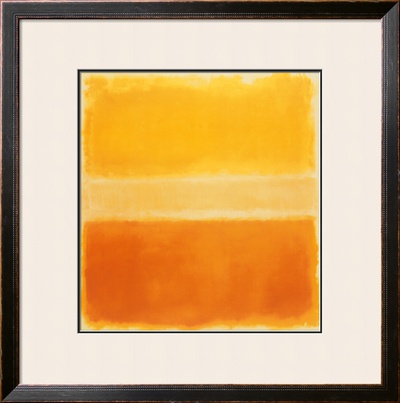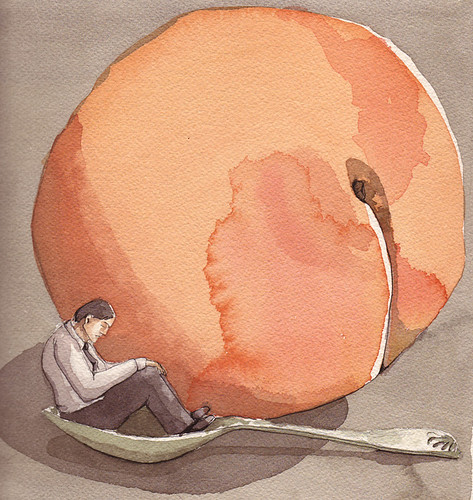In other news...
Keeping a blog for this class has been really interesting, and as this is likely one of my final posts I want to reflect a bit on the experience. Overall, I really like this approach to submitting and presenting projects: it's much more in line with the new internet-based direction that education/higher learning is headed, and seemed quite appropriate for a class that was all about "making it new!" I also enjoyed commenting on others' blogs, and look forward to reading through my classmates' projects in the coming days. It's been fun, guys.
-------------------------------------
“Breathe-in experience, breathe-out poetry.“
~Muriel Rukeyser
What is poetry? This seemingly straightforward question has been a point of contention among writers, critics, and readers throughout the history of written language. The Oxford English Dictionary contains over eleven definitions of the term “poetry,” including in one of its entries the phrase “…[an] arrangement of language in which the expression of feelings and ideas is given intensity by the use of distinctive style and rhythm…” (OED Online). However, this definition only begins to scratch the surface. Poetry is a slippery beast - at times, such as in Lyn Hejinian’s My Life collection, it wishes to be appreciated and experienced without over-analysis; in other instances, such as T.S. Eliot’s “The Wasteland,” it almost dares the reader to comprehend (or even identify) its obscure, frequent literary and cultural references. Additionally, modern poetry circles continue to challenge the traditional boundaries of the art form by publishing increasingly abstract and nonsensical works (Komunyaaka 11). How does one come up with “rules and regulations” for a topic that has been evolving since its inception? Such a task is likely hopeless. That being said, what follows are my best attempts to define the enigma that is poetry.
Poetry is an act of creation, an attempt to express an intangible emotion or experience through the spoken or written word. This creation can happen either in the singular or plural: an author can attempt to create a work without support, or can intentionally link a poem’s relevance, importance, and meaning to the input and interpretation of other people. At its core, though, poetry is ultimately about expression. In its very existence, its essence as an art form, it is grounded in a desire to articulate something of importance and share it with the world.
A central argument when discussing what defines poetry is whether or not it should be accessible to the reader on a literal level. To some extent, I agree with Yusef Komunyaaka’s thoughts in his introduction to the The Best American Poetry 2003 anthology on “over-experimentation muddling the text” of a poem. It is entirely possible for language in a poem to be distorted to the point where its meaning is lost on readers (Komunyaaka 17). In fact, this is perhaps one of the most common criticisms raised against the writings of modern/postmodern poets: is poetry significant if its content cannot be appreciated or understood by others? For example, parts of G.C. Waldrep’s Disclamor are certainly a challenge to analyze or make any literal sense of. Consider the opening lines of his poem “Semble:”
“With all vigor of the saints.
In an upper story.
A fine grain against the wrist like gold stubble.
Is one way we defined time,
then. In that cluster of hive-like houses.
In the corridor of sprung beeves.
And were not ashamed,
or not like that, not in the same way…” (75)
Waldrep clearly relates much of the importance of this poem to form - the actual content of this work is scattered at best, and when critically analyzed comes off as random and nonsensical. This leaves its physical layout on the page as one of the only angles from which it can be approached. However, Komunyaaka argues that this type of poetry may actually be destructive and that poetry in which the significance rests on form instead of content is “an attempt to undermine the significance of recent history” (15). Such a declaration places him in the school of thought that a poem’s words should mean something. He believes a poem’s contribution to the world should be related to its content and cohesion, not solely structure.
On the opposite end of the spectrum, poets such as Lyn Hejinian feel poems can exist that “create nothing, that represent nothing,” because, she argues, this “nothing” is simply an emotion or thing beyond our capacity as humans to comprehend (13). Her statements, although tempting to accept as undeniably true, present something of a logical fallacy. How can one prove something has been created if the very definition of the created item states that its existence cannot be verified? This argument is not meant to dismiss Hejinian’s overall thoughts on poetry; on the contrary, I find much truth in her statements that poetry is not a “static art form,” that it is in constant interaction with its audience (12). However, the point still remains that poems cannot easily interact with readers when they simply come across as disjointed sentences, as was my experience when reading the opening lines of “The coffee / drinkers answered / ecstatically” from Hejinian’s My Life:
“The traffic drones, where / drones is a noun. Whereas / the cheerful pessimist / suits himself in a bad / world, which is however / the inevitable world, im- / possible of improvement. / I close one eye, always the / left, when looking out onto the glare of the street. / What education finally serves us, if at all. There is a / pause, a rose, something on paper. The small green / shadows make the red jump out. That is not a tele- / scope, nor do I have stars in my belly” (“My Life” 74).
Another main point that Komunyaaka and Hejinian may disagree on is whether or not poetry can be created as an isolated unit. Hejinian’s mentality toward poems is grounded in the concept of reciprocal exchange forming the basis of a poem’s significance. This is achieved through interaction between the poet and readers of the poet’s work, between poems themselves (as alluded to in her introduction to The Best American Poetry 2004), or in some combination of these two approaches (13).
Komunyaaka, on the other hand, believes that a poem should be able to stand on its own without interaction. He seems to think a poem should say something concrete, that a poem’s author should play the main role in determining the poem’s content and significance. This does not mean the readers themselves are helpless; instead, they are invited to share the experience or emotion the author has begun to lay out for them. This belief is perhaps most evident in his explicit affirmation of Carolyn Forchè’s Against Forgetting anthology (Komunyaaka 13). The collection contains an incredibly diverse array of poems that run the gamut from concrete to abstract, but according to Forchè share a common theme of witnessing to unspeakable events and presenting this witness is in some way to the reader (Forchè 33). A fascinating example can be seen in the prose poem “Falling-Out Old Ladies” by Danill Kharms, one of the Soviet poets featured in the collection:
“Because of her excessive curiosity, an old lady fell out of the window and smashed into the ground.
Another old lady looked out of the window, staring down at the one who was smashed, but out of her excessive curiosity she also fell out of the window and smashed into the ground.
Then the third old lady fell out of the window, then a fourth did, then a fifth.
When the sixth old lady fell out of the window, I got bored watching them and went to Maltsev market where, they say, someone gave a woven shawl to a blind man” (Gibian 7).
Kharms lived in a brutal and repressive environment that was marked by nonsensical violence, and his work functions as poetry of witness by demonstrating an Absurdist response to the death and horrific events that were ever-present in his life.
Perhaps the common ground all these editors and poets share is the opinion that poetry must contribute something of value to its audience. This contribution can take many forms: a poem can arouse strong emotions in a reader, it can educate them on a neglected social or political issue, or it may simply make them think about a topic in a new way. However, poetry at its most visceral is about the interchange of ideas. When artistic minds use creative language to make things happen, sharing feelings, experiences, and emotions with others, an exchange known as poetry is most definitely occurring. Is this process vague and intangible, indefinable even? Perhaps. However, it is clear that poetry is a powerful medium that will continue to function as a force in our world, and as put so beautifully by Robert Penn Warren, it remains “...a light by which we may see - and what we see is life.”
Works Cited
Gibian, George, ed. The Man with the Black Coat: Russia's Literature of the Absurd - Selected Works of Daniil Kharms and Alexander Vvedensky. Trans. George Gibian. Evanston, IL: Northwestern UP, 1987. Print.
Hejinian, Lyn. Introduction. Lyn Hejinian and David Lehman, eds. The Best American Poetry 2004. Scribner, 2004. 9-14. Print.
Hejinian, Lyn. My Life. København: Green Integer, 2002. Print.
Komunyakaa, Yusef. Introduction. Yusef Komunyakaa and David Lehman, eds. The Best American Poetry 2003. New York: Scribner, 2003. 11-21. Print.
Komunyakaa, Yusef. Introduction. Yusef Komunyakaa and David Lehman, eds. The Best American Poetry 2003. New York: Scribner, 2003. 11-21. Print.
"poetry, n.". OED Online. March 2011. Oxford University Press. 14 April 2011.
Waldrep, George Calvin. Disclamor. Rochester, NY: BOA Editions, 2007.


